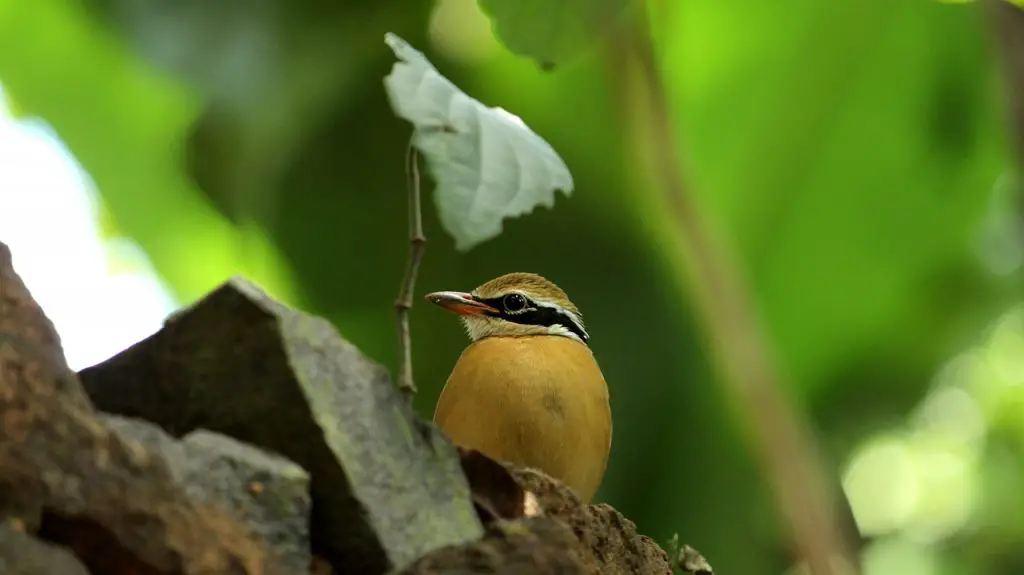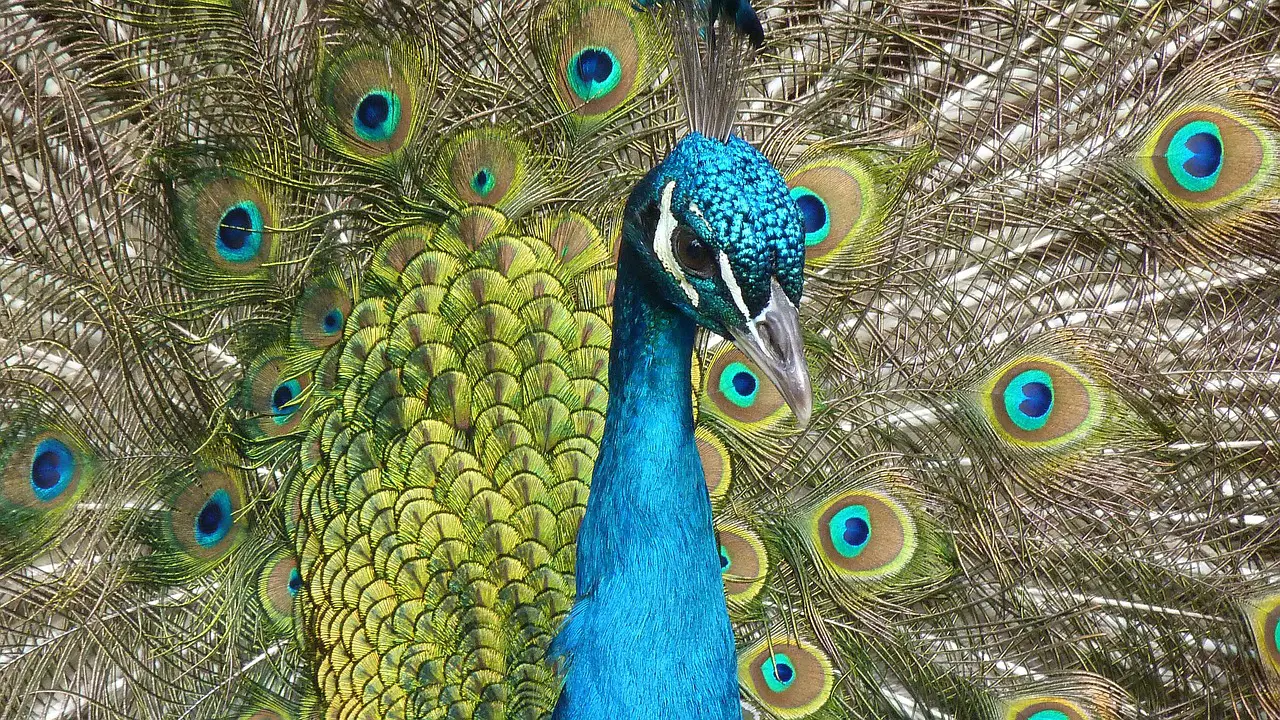Not many areas of the world have such a varied landscape as India, and the birds of India are just as diverse.
India has 113 families of birds and 1,361 species. There are 81 endemic species that cannot be seen in any other country. India has some of the most diverse habitats in the world, and this is reflected by the many different species that can be seen here.
If you are planning a trip to India, you may spot many birds that you have never seen before.

Bird life of India
India is smaller than the United States and much smaller than Europe. However, while the United States has 1,107 species and Europe has 930 species, India has an incredible 1,361 species of birds.
Because India has such varied landscapes, there is a huge difference between the species that live in the hot, dry plains in the west and the rainforests in the northeast. At the same time, the snowy mountains of the Himalayas and the mangroves of the Sundarbans bring even more diversity.
These areas have their birds characteristic of these areas and can only be found in their particular environment. However, some common birds are very widely distributed. By recognising the common birds, it makes it easier to identify the rarer birds.
India forms a large part of one of the world’s zoogeographical regions, the Oriental zoogeographical region. A zoogeographical region is where animal life is more closely related than it is to that of the others. The region also includes the Indian subcontinent, Southern China, Malaysia, the Philippines, and the islands of Indonesia. The Oriental zoogeographical region includes 2,586 species of bird, with India boasting over half of all of these at 1,361, making it an excellent place to visit.
Many of the bird families can be seen in other zoogeographical regions, including Africa and the Americas. There are 113 families of birds in India, including those found worldwide, such as ibises, trogons, pelicans, barbets, parrots, owls, crows, and cuckoos. Babblers, bulbuls, cuckoo-shrikes, hornbills, sunbirds can be found in the Old World tropics and can all be seen in India.
However, India has 81 endemic species that cannot be seen elsewhere. The Andaman nightjar Caprimulgus andamanicus, Nilgiri wood pigeon Columba elphinstonii, Great Nicobar serpent eagle Spilornis klossi, and the Andaman serpent eagle Spilornis elgini are just some of the species you cannot see outside of India.
Birds of prey can be seen in India, especially around Delhi in winter, and many pheasant species can be seen throughout. Amazing flocks of breeding and wintering waterbirds are a special attraction of the wetlands, with cranes, ducks and geese seen in huge numbers as they migrate to India.
India is a popular migrating spot for many other birds, including buntings, flycatchers, thrushes and wagtails.
There are eight birds you can only see in the Bahamas? Find out what they are here

Where birds live in India
Most birds tend to keep to their surroundings, and you can often see them repeatedly by revisiting these areas. While some birds are more adaptable to others, many factors determine where they live and reproduce successfully. All birds have food requirements and a need for a good resting and nesting site.
A bird’s surroundings are called its habitat, and different habitats all have their species of birds. Forests, hillsides, countryside, marshland, and shrubberies all have birds that prefer to live there.
Herons, storks, rails, cormorants, ducks, and crakes can all be seen among the plains’ ponds, marshes, and lakes. Birds of prey such as eagles, sparrowhawks, and harriers can be seen flying overhead, while small birds such as coucals and weavers can be found in the grass and reeds below.
In the open, dry areas such as the sub-desert or thorn scrub, larks, sandgrouse, bustards, and chats can be found. As with many other cities worldwide, pigeons, crows, sparrows and starlings are common, living alongside more tropical birds such as parakeets and mynas.
In parks and gardens in much of India, bulbuls, crows, doves, sunbirds, and some warblers can be seen, while in more open areas, drongos, shrikes are rollers can be observed.
Some families are widespread such as the many species of babblers. Although diverse in their size and colour, babblers can be found in the plains through the Himalayas, where you can also see flycatchers, Himalayan monal, Himalayan snowcock, quails, and swiftlets. With such beautiful scenery and cooler conditions, the Himalayas in India are a fantastic place for birdwatching.
However, woodland birds are harder to see than birds in the open, and you may not notice many at first. However, a bird hunting party can often be encountered. A bird hunting party may sound bad but it is when many species get together to search the woods for food at all levels. This gives the avid birdwatcher an amazing way to see so many species at once.
Distribution of birds
There are many different regions in India with many species of birds. India is the seventh-largest country in the world. From the Indian Himalayan region, which is snow-covered, the monsoons in the east in the Bay of Bengal in summer bring the rains, which breathe new vegetation into the area.
As you head westwards, the rains become lighter, and the Rajasthan Thar desert shows a completely different distribution of birds. The hilly countryside of broken rocks leads to the Deccan plateau, which is home to the jungle babbler Argya striata, ashy prinia Prinia socialis, and the purple sunbird Cinnyris asiaticus.
The rains from the southwest monsoons help grow the Western Ghats’ hill forests, bringing some fantastic species such as the Malabar grey hornbill Ocyceros griseus, blue-winged parakeet Psittacula columboides, and the black-naped monarch Hypothymis azurea.
- Northwest India – Includes the arid areas of the Punjab, Rajasthan, and Kutch. There are many species common to the desert and sub-desert areas of the west.
- Himalayas – Bird life in the Himalayas is Indo-Chinese primarily.
- Northern India – The Great Plains includes forested zones and swampy plains.
- Deccan – There are many different species of bird life here
- South-west India – Includes the humid hills of Kerala, Madras and Mysore and is known as the Western Ghats.
- Northeast India – Includes forested regions of Meghalaya, Mizoram, and Nagaland. Central and western parts have many of the same species as Northern India but in the east the birds are more Indo-Chinese.
Did you know there are seven birds you can only see in Spain? Find out more here


